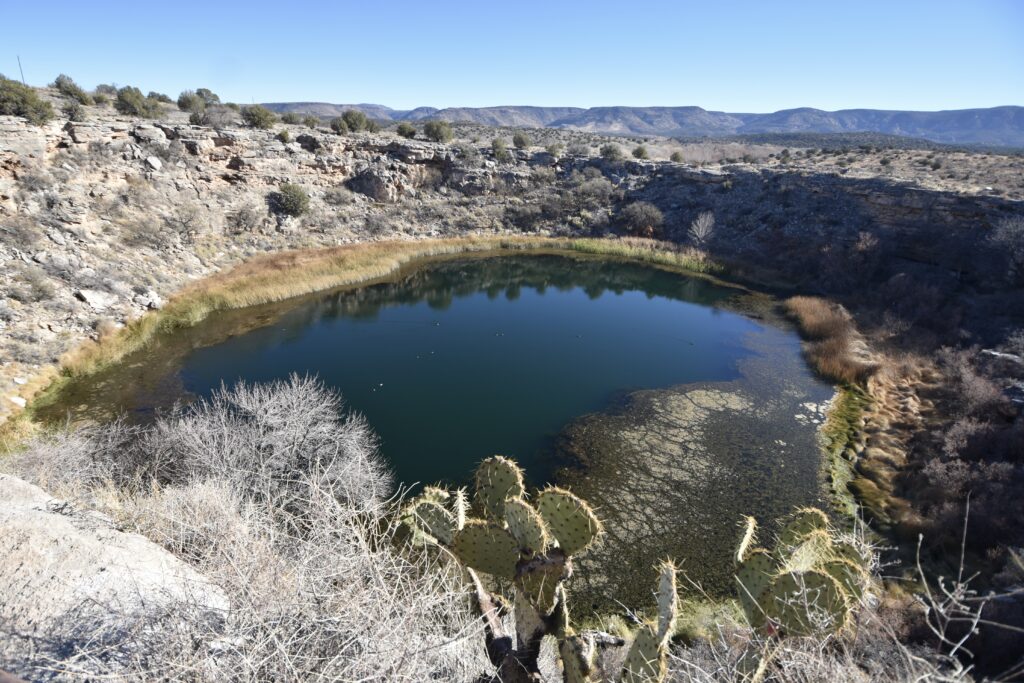
If you remember comedian Michael Myers’ SNL “Coffee Talk” observation that “the Holy Roman Empire was neither Holy, Roman, nor an Empire,” you can appreciate the bit of humor in the name of “Montezuma’s Well,” which isn’t a well and which has nothing whatsoever to do with Montezuma (whose nearby “Castle” also isn’t a castle, and also wasn’t his).
Nevertheless, the geological feature that goes by this malapropic name is pretty amazing. In essence, the Well is a large sinkhole filled with water: but filled in a rather extraordinary way. Rain that falls on the nearby Colorado Plateau percolates through the ground, travels underneath the Mogollon Rim, runs into a basalt dam below the sinkhole, and is forced upward into the bottom of the Well, and then spills through a small cavern into the adjacent Wet Beaver Creek. How much water? About 1.5 million gallons per day. And from how deep of a bottom? Ah, now that’s a good question.
The difficulty in determining the actual depth of the Well is occasioned by its false bottom of “fluidized sand,” that is, sand kept in a constantly moving suspension by the water’s upflow. The pressure of this flow and the density of the sand it suspends thwarts every attempt at depth-measurement by simply spitting back every instrument (or anything else) dropped thereinto. And so, with respect to its actual depth, the Well keeps its secrets.
As unique as its geological characteristics, the Well is even more peculiar as a biosphere. High levels of CO2 in the water (and consequent low levels of O2) make it uninhabitable by any fish. But it is far from uninhabited. On my first visit to the well, I was cheerfully greeted by a volunteer-in-training with a warning about the Well’s “flesh-eating leeches.” Not an entirely accurate warning, as it turned out, but delightful all the same.
The truth, however, is no less delightful. The water of the Well teems with algae and arthropods and water-scorpions and snails and, yes, leeches: not flesh-eating, but blind, hairy leeches that swarm in cloudlike fashion from about thirty feet down to the bottom. Five of the Well’s species are endemic; that is, they do not exist anywhere else on the planet. One of its species, the snail, cannot live anywhere else. For all five of these species to have developed such environmentally-specific adaptations in the mere thousands of years since the sinkhole is thought to have dropped, is more than remarkable.
Such a fascinating natural feature could not have failed to attract the attention of the region’s earliest inhabitants. The Hopi, Zuni, and Yavapai all recount oral histories of their ancestors living here and of the expulsive properties of the Well’s bottom, and some have the tradition of having emerged into this world through the Well itself. Remnants of ancient stone dwellings are present in and around the sinkhole, but even more impressive are the remains of a (now restored) irrigation canal which intercepted the water flowing from the Well into the creek and transported it to farms as far as seven miles away.
Whether one’s interests are more geological, biological, or anthropological, Montezuma’s Well is certainly worth a visit.